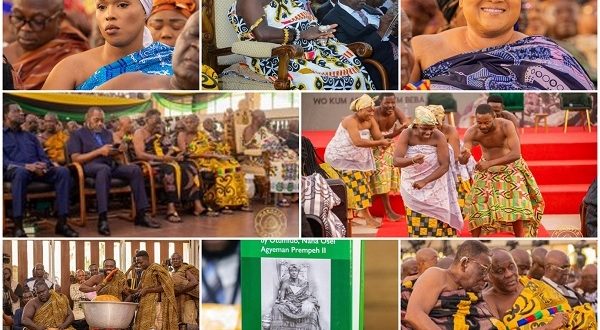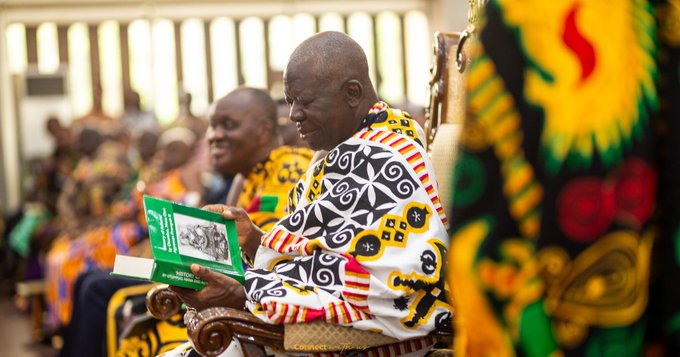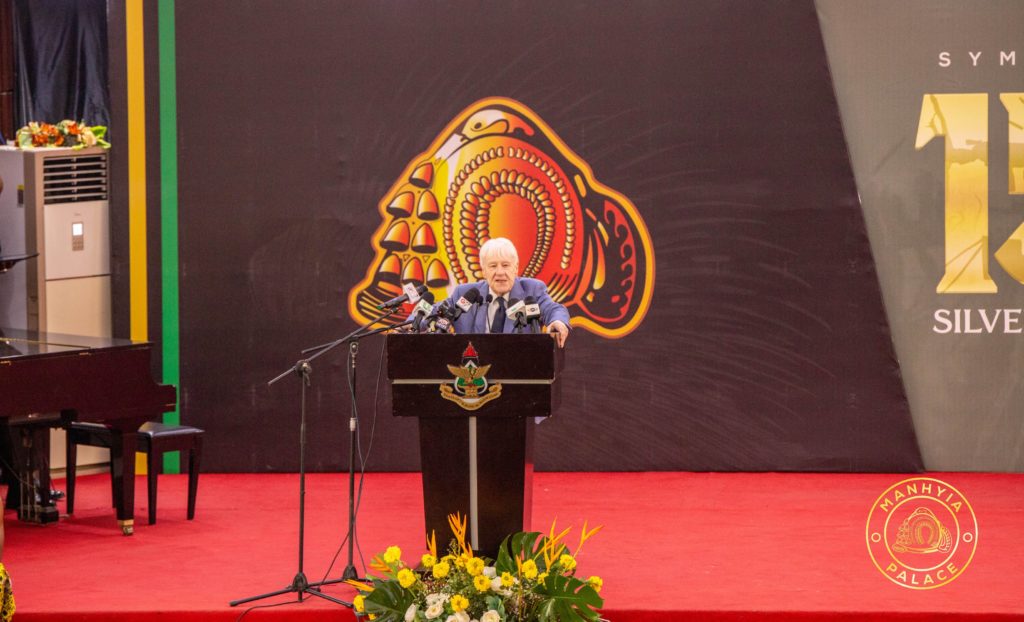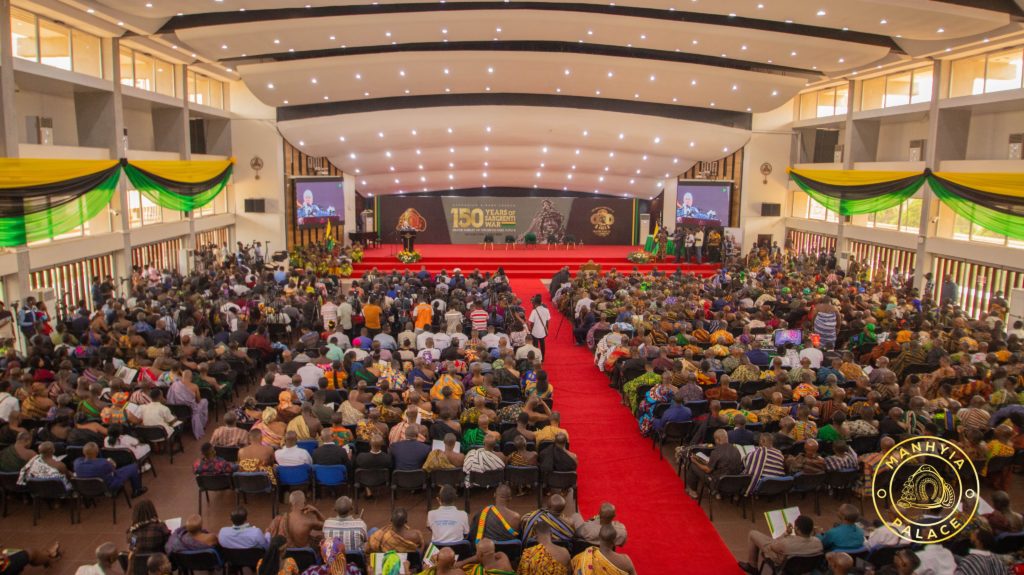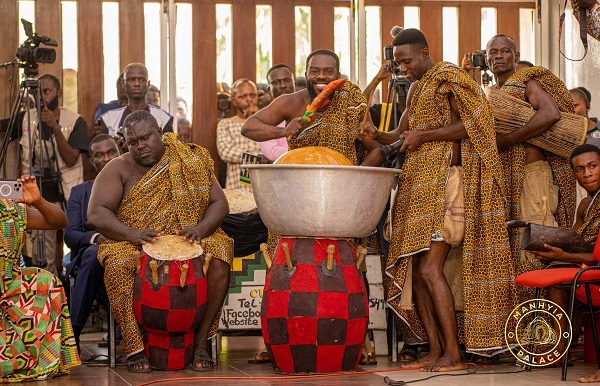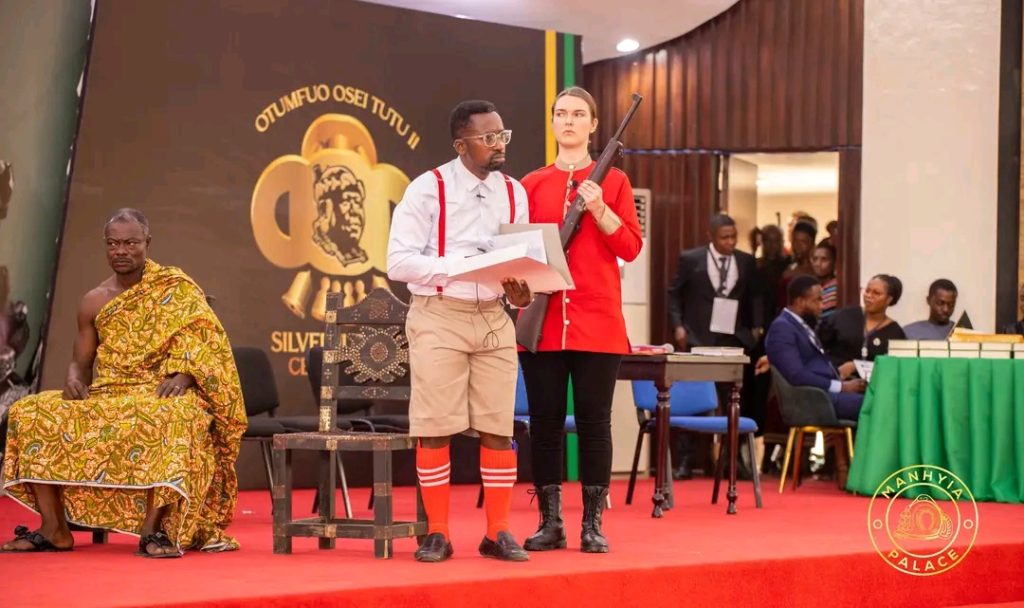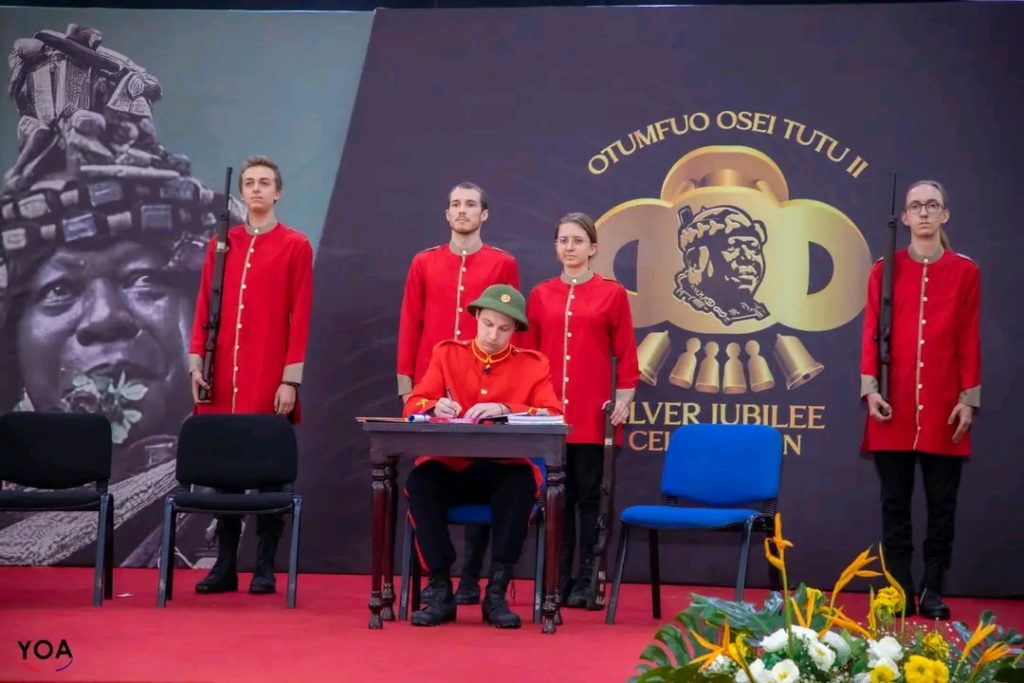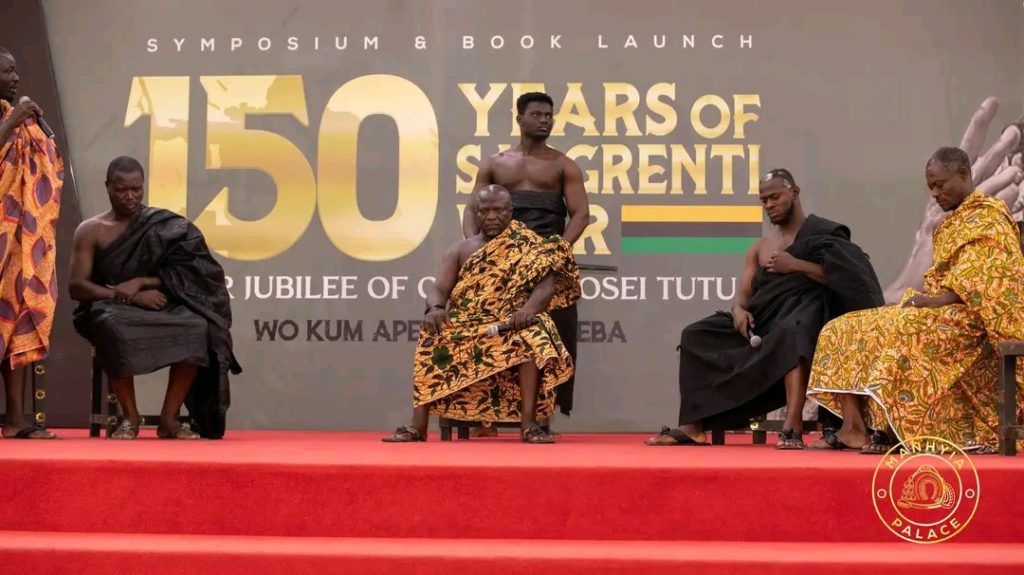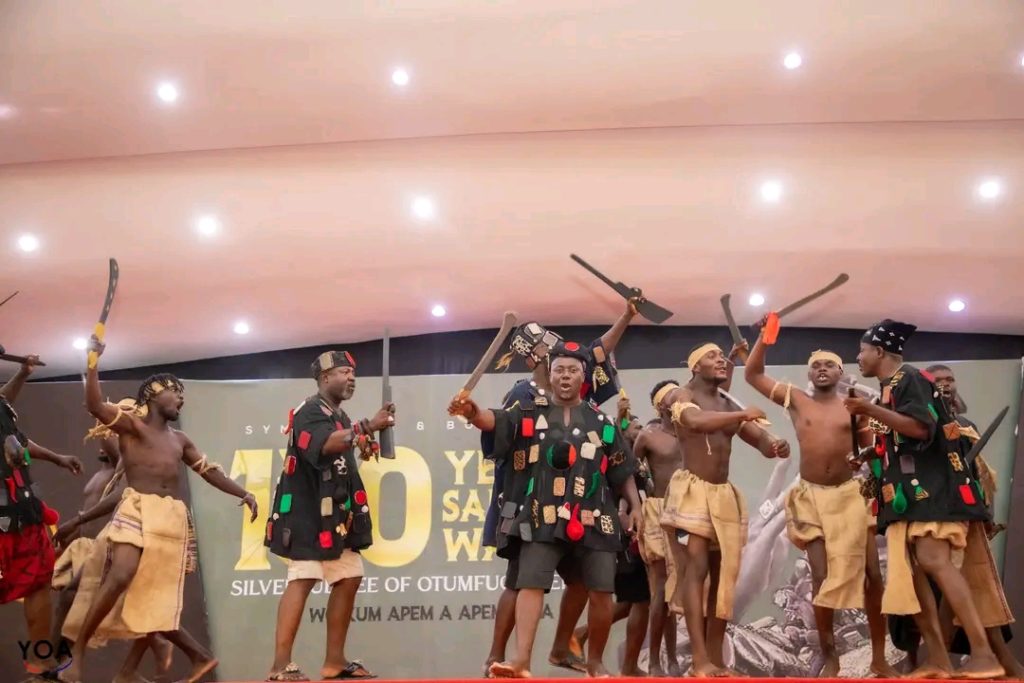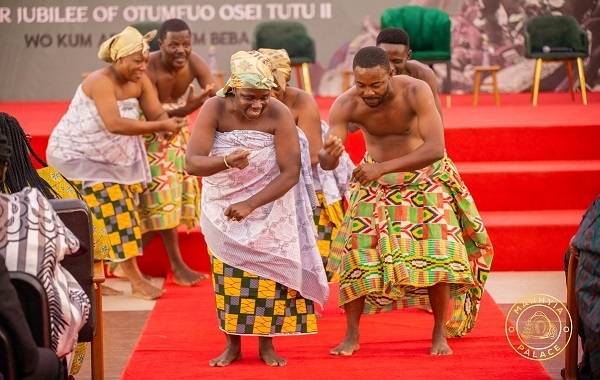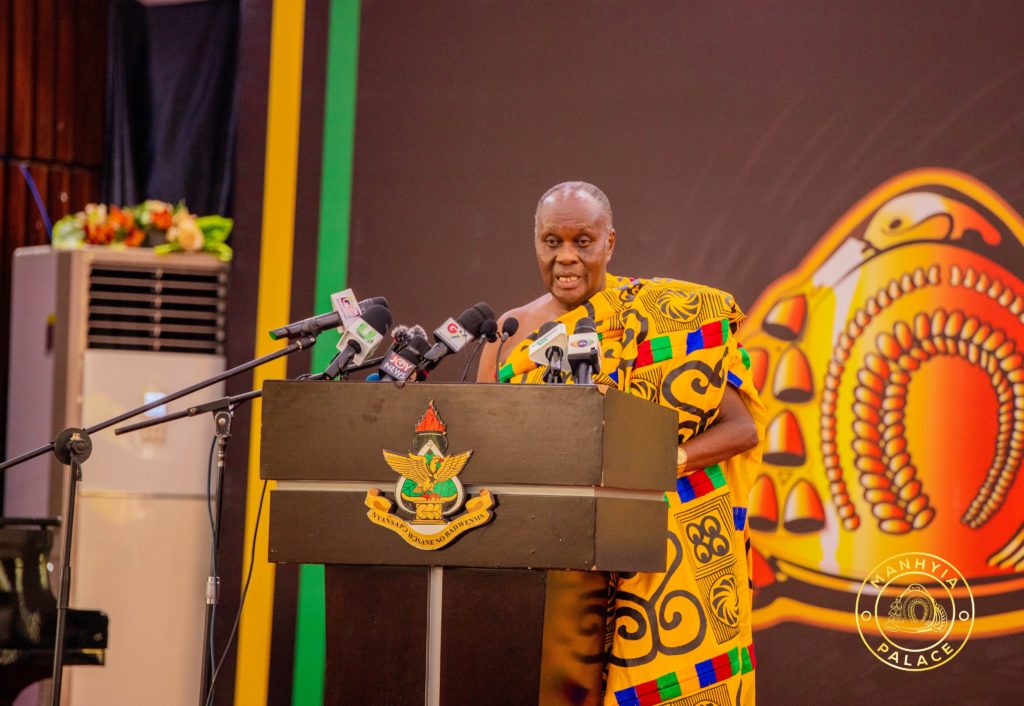Asanteman and its well-wishers convened on Tuesday, February 6, 2024, to remember the Sagrenti War of 1874, also known as the Anglo-Ashanti War as they reflected on the scars it left on the great empire.
It marked the 150th year of the war and though none of the victims of the war was among the congregation who massed up at the Kwame Nkrumah University of Science and Technology (KNUST) for the symposium, the impact and the scathe resonated.
Present at the event were His Majesty Otumfuo Osei Tutu II, the Monarch of the Asante Kingdom; Justice Kwasi Anin-Yeboah, former Chief Justice and Chair of the event; Hon Simon Osei Mensah, the Ashanti Regional Minister; Dr Yaw Osei Adutwum, Minister for Education; Dr Matthew Opoku Prempeh, Minister for Energy; and the Vice Chancellor of KNUST, Prof Rita Akosua Dickson.
Paramount chiefs, sub-chiefs, and queen mothers who form the kingdom also showed up for the commemoration. Schools including Kumasi Girls’ Senior High, Opoku Ware Senior High, Prempeh College, and some Junior High Schools had their students duly represented.
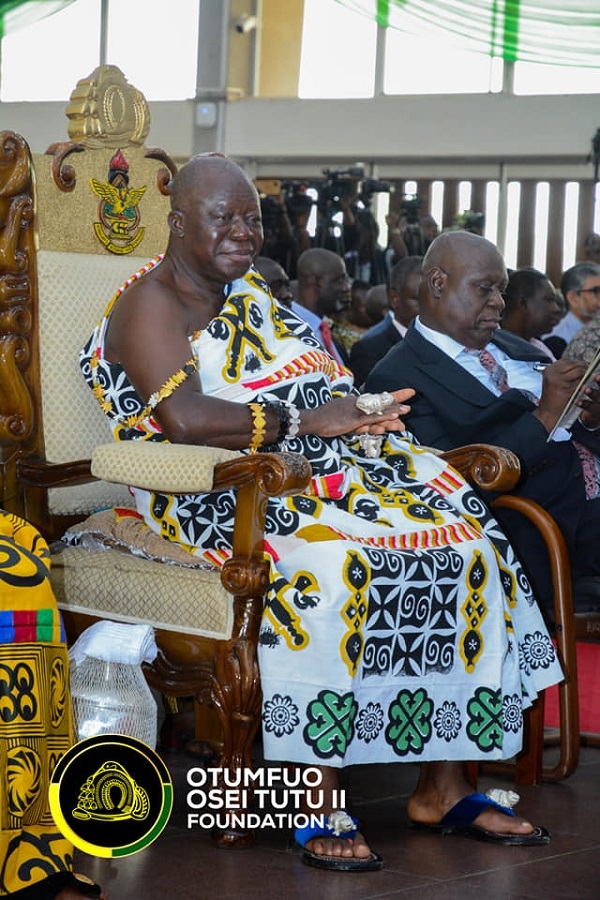
The event saw the display of cultural interludes including dance and drama about the war by the Centre for National Culture in Kumasi.
A panel discussion about the war, covering precedents, modes, effects, and aftermath, was held by a panel of insightful historians from various backgrounds.
The Speakers for the event included Prof. Emmanuel Akyeampong, the Oppenheimer Faculty Director of the Harvard University Centre for African Studies and Professor of History and African and African American Studies at Harvard University, Dr Tom McCaskie, the Head of the Centre of West African Studies at Birmingham University, Prof Samuel Ntewusuo, Prof Samuel Agu Gyamfi and Dr. Eugenia Anderson.
The first set of stolen Asante artifacts during the Sagrenti War which were recently returned from the Fowler Museum of the University of California in Los Angeles, United States of America, were presented to the Asantehene.
Also, a book titled “History of Asante”, authored by Otumfuo Sir Agyeman Prempeh II and edited by Dr. McCaskie was launched at the event.
The book was outdoored for the first time in its history and goes onto bookshelves for sale across the country and beyond.
Dr. McCaskie
Prior to 1874
In his presentation, Prof Adu Gyamfi highlighted the landscape of the cosmopolitan city of Kumasi before the Sagrenti War, calling it a cultural capital and sophisticatedly elegant.
The city, he noted, was a well-built metropolis and economic centre covering one mile north to the south and ¾ of a mile in which the monumental Palace was located on a hill in the city centre measuring one million five hundred thousand square feet and covering 34 acres.
“The East edge of the imperial residence was the sacred Subin River. Strategically positioned throughout the large garden landscape of the Asantehene’s city were elaborately Asante designed buildings and residences belonging to Asante chiefs and courtiers to the King. The Asantehene’s city in the Adum area was not demarcated by walls like the typical imperial cities. The architecture of the noblemen’s houses surrounding the residence, the dense forest and the Subin River formed an invisible defence against invaders.”
According to him, the Kingdom, forged through war and a covenanted unity by other paramountcies through the Golden Stool, was egalitarian and also deployed diplomacy in its relations with neighbours.
About the War
The war led by Sir Garnet Wolseley was fought during the reign of Asantehene Kofi Karikari. It characterized the burning of the whole city of Kumasi and the Palace of the King after it was looted of artefacts and gold dust.
According to Dr McCaskie who delivered the keynote address, Governor Wolseley pursued the war on grounds of personal ambitions, that is, ascending to the top position of the British army which he eventually got.
“There is a personal motive and Wolseley fighting this war and being seen to have fought it and won it for himself, Britain and Queen Victoria and the rest. We can prove this. This was the first war in which Wolseley was accompanied by a large number of the British press. This war was reported very extensively in England with Jubilations when Kumasi was taken.”
Elaborating on the impact of the war, the historian said the war shattered the unity among Asantes as conflicts broke out in Asanteman with Adansi rising against Bekwai and Mampong going to war against Ejisu, etc.
“It was a period of deprivation. People starved to death, people were homeless, people were refugees. The country was in ruins. Kumasi in 1880s was in a terrible situation,” he said citing a book he scripted from firsthand accounts of victims of the war.
View pictures from the event below (photo credit Opemsuo Radio, Otumfuo Foundation)
Nana Siriboe II
THANK YOU for constantly reading stories on MyGhanaMedia.com, a news publishing website from Ghana. Kindly like, follow, comment, and SHARE stories on all social media platforms for more entertaining updates!
Follow us on Twitter: https://twitter.com/
Source: MyGhanaMedia.com
There are four types of content published on MyGhanaMedia.com daily: curated content; syndicated content; user-generated content; and original content.
 MYGHANAMEDIA.COM Best Source Of Latest News
MYGHANAMEDIA.COM Best Source Of Latest News
